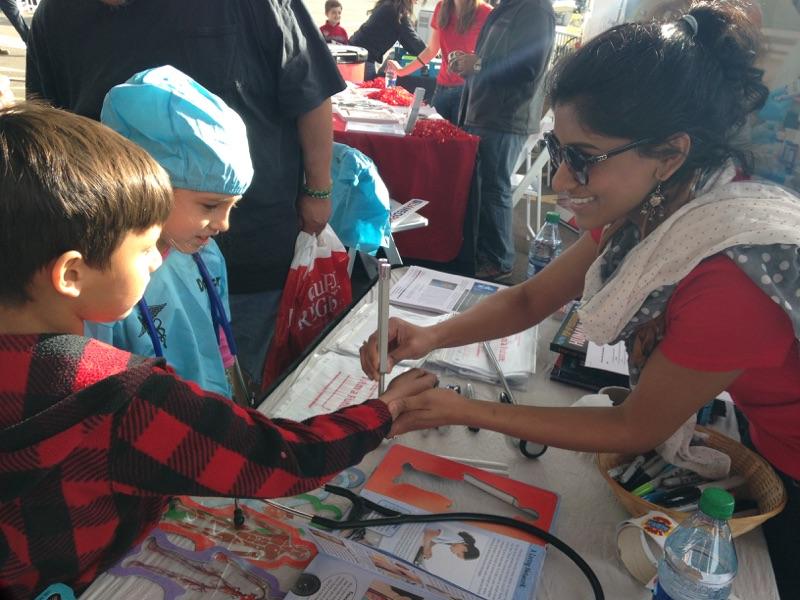It’s another busy day at the clinic. You look up the patient list for the afternoon and start skimming through. As you sift through chief complaints, past medical histories, and social histories, you start to paint pictures of your patients in your mind. What are your initial reactions to the veteran patient, dementia patient, schizophrenic patient, sex worker patient, wheelchair-bound patient, LGBTQ patient, blind patient, trisomy 21 patient, hepatitis B patient, alcohol-dependent patient, incarcerated patient, suicidal patient, poor diabetic control patient requiring kidney transplant, severely obese patient, pregnant teenage patient, homeless patient, monolingual Arabic-speaking patient? As you read through that list, you may feel varying levels of comfort or discomfort.
Like many students, I joined medical school straight out of undergrad. I had not met people from many of the backgrounds I listed. As care providers, unconditional empathy is an expectation we have of ourselves and our society holds us to. But even patients are unfortunately aware that they may be stigmatized by their providers in situations where they feel most vulnerable. Stigma can be a bigger barrier to care than cost. As patient satisfaction becomes a greater part of our outcome measures, studying and teaching empathy in medical schools has practical importance.
Empathy, as defined by Post et al., is the “ability to understand or imagine the depth of another person’s feelings and to resonate personally with that feeling to some extent . . . Empathy by definition is a feeling as well as a cognitive state” [1]. The authors specify that empathy is distinct from sympathy since we can understand another person’s condition without feeling sorry for him/her. By empathizing, we engage our patients in their experience of illness, but we do not necessarily agree with their perspective.
We may enter medical school thinking we can care for all of our patients without impedance of personal values or without realizing we had certain biases ingrained in us. Negative feelings hopefully change as first-hand experience treating various patients with compassion melts away stereotypes and stigma. This is supported by Burke et al., who found that repeated positive interactions of heterosexual medical students with gay and lesbian patients decreased the implicit and explicit bias by medical students [2]. Exposing ourselves to new environments also uncovers our hidden strengths, deficiencies, and preconceptions that we can continue to work on.
The change in empathy among medical students around the world as they progress through their medical school training has been formally studied since the mid 1990s. Whether there is a decline in empathy over the course of training is a controversial topic [3,4]. In a Singaporean study published last month, Ren et al. studied how empathy changed in over 800 medical students over the course of their five years in medical school [5]. Using the validated Jefferson Scale of Physician Empathy (Student Version), they found empathy significantly declined from preclinical to clinical years. Based on survey results and student comments, they relate this decline to new learning environments, patient contact, and burnout. Students entering medical specialties had statistically higher empathy scores than students entering surgical specialties. The authors also conducted an additional survey to evaluate factors correlated with empathy. They found that higher empathy scores correlated with more time spent with family, community service projects, the arts, and meeting people from contrasting backgrounds. Studies like this have many limitations. Kelm et al. [6], in their systematic review of empathy research, show that most studies do not vigorously study empathy by rating patient satisfaction with interpersonal communication. It is difficult to determine what interventions can be taken to improve empathy. If community service projects are correlated with higher empathy, can participating in service program like CHIP promote empathy, or conversely, are more empathetic individuals seeking out these opportunities?
Another controversial topic in medical education is whether empathy can be taught. In his New England Journal of Medicine editorial “Getting the Right Medical Student—Nature versus Nurture,” Dr. Schwartzstein of Harvard Medical School suggests that students learn by observation of their teachers, so medical schools should select clinical faculty for their ability to support interpersonal skills and desired empathetic values [7]. As our Doctoring program does, he suggests we should assess students on their interpersonal skills and prohibit students deficient in the skills from advancing in their training. For some students, especially during standardized exams that are time-restricted, the empathy requirement may promote the concept of “fake it till you make it.” Our teachers and students know that developing empathy and compassion takes more than a couple of years to master. However, from another standpoint, rather than viewing the empathy question as a check box to pass our classes, we could view it as a reminder during every real patient encounter to ask our patients their perspectives. Thus, we can learn from every interaction and be self-taught in unconditional empathy.
Empathy is a complex construct that includes our ability to stand in our patients shoes and also be open to listen to their perspective. Whether empathy can be measured, tested, or changed over the course of our training, our behavior and conversations with our patients are our own responsibilities. Treating our patients and colleagues with empathy is perhaps not a one-time accomplishment but a lifelong goal.
1. Post SG, Ng LE, Fischel JE, et al. Routine, empathic and compassionate patient care: definitions, development, obstacles, education and beneficiaries. J Eval Clin Pract. 2014;20(6):872-880.
2. Burke SE, Dovidio JF, Przedworski JM, et al. Do Contact and Empathy Mitigate Bias Against Gay and Lesbian People Among Heterosexual First-Year Medical Students? A Report From the Medical Student CHANGE Study. Acad Med. 2015;90(5):645-651.
3. Hojat M, Vergare MJ, Maxwell K, et al. The devil is in the third year: a longitudinal study of erosion of empathy in medical school. Acad Med. 2009;84(9):1182-1191.
4. Colliver JA, Conlee MJ, Verhulst SJ, Dorsey JK. Reports of the decline of empathy during medical education are greatly exaggerated: a reexamination of the research. Acad Med. 2010;85(4):588-593.
5. Ren GS, Min JT, Ping YS, et al. Complex and novel determinants of empathy change in medical students. Korean J Med Educ. 2016;28(1):67-78.
6. Kelm Z, Womer J, Walter JK, Feudtner C. Interventions to cultivate physician empathy: a systematic review. BMC Med Educ. 2014;14:219.
7. Schwartzstein RM. “Getting the Right Medical Student—Nature versus Nurture. N Engl J Med. 2015;372:1586-1587
Sravanthi Vegunta is a fourth year medical student at UACOM-Phoenix whose career interests include ophthalmology, research, teaching, and community service. She grew up in Peoria, Illinois and graduated from ASU in 2012 with a degree in Cells, Genetics, and Developmental Biology. She is especially interested in pursuing interdisciplinary research as a means of caring for patients, starting important discussions among the scientific community, and finding creative solutions in medicine.


